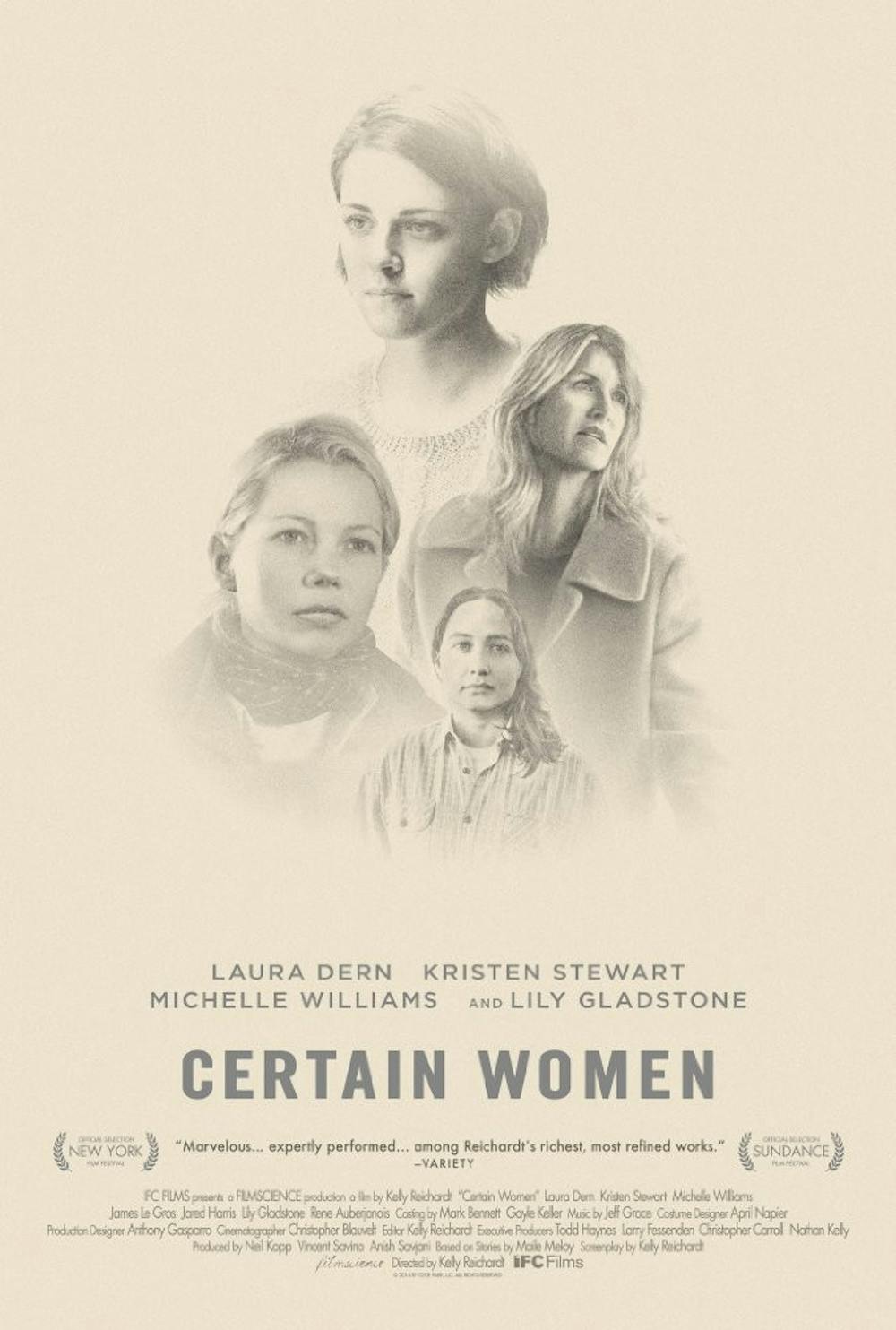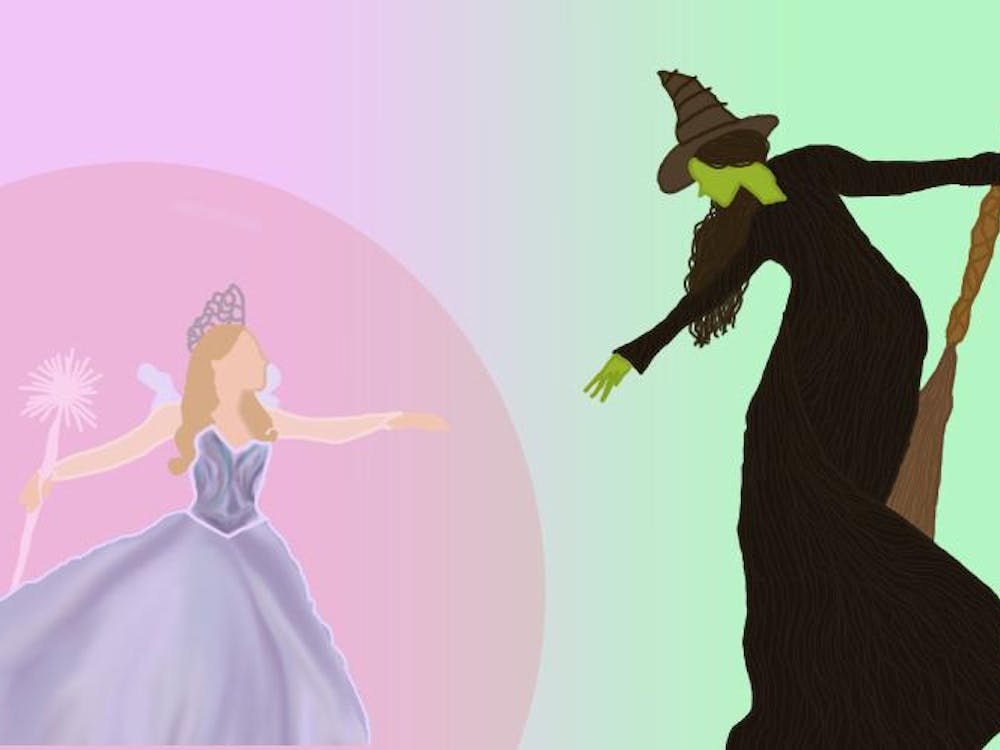Few filmmakers are able to convey the unaddressed tensions and subtle miseries of ordinary life as seamlessly as Kelly Reichardt. Her filmography consists of minimalist films like “Night Moves” and “Meek’s Cutoff,” which circumvent formulaic Hollywood flair and make for great drama, even in their quietest moments. Her latest effort, “Certain Women,” continues this neo-realist approach with luminous results.
“Certain Women” is adapted from a short story collective by Maile Meloy and follows the vaguely interconnected lives of Laura (Laura Dern), Gina (Michelle Williams), and Jamie (Lily Gladstone). Laura is a lawyer who attempts to remain level-headed with a frustrating client. Gina uses the building of her new home as a way to channel her unspoken dissatisfaction with her family. Jamie is a lonely ranch hand whose sole companion is the dog who runs alongside her as she goes through her arduous daily routine. Jamie meets Beth (Kristen Stewart), a young lawyer teaching a student justice class, and becomes enamored.
The performances of “Certain Women” stand out as some of these talented actresses’ best work. Not only do their performances capture the ambiguity of their characters, but Dern, Williams, Gladstone and Stewart also prove how the fragility of human interaction can be conveyed in stillness or an inhibited half-smile, a welcome reprieve from the grandiose yelling and bewildered expressions ubiquitous in modern film.
Among the cast of distinguished actresses, it is newcomer Lily Gladstone who gives the film’s most compelling, poignant performance. While most of the film’s length is devoted to women fatigued by years of subtle sexism, Jamie and Beth’s act focuses instead on unresolved moments of miscommunication.
The women begin to go to a diner after class where Beth complains about her long commute to work while Jamie looks at her, completely transfixed. To highlight the isolation between these characters, each line said in these scenes comes slightly disconnected from the next, and the women rarely appear together in the same shot. Jamie and Beth live in two different worlds and their intersection culminates in a tense, melancholic finale.
The three stories are mostly connected by the endless, flat landscape of Montana, gorgeously shot in 16-millimeter film. Reichardt’s precise, naturalistic use of setting allows familiar images — a door opening, a train passing, a light bulb on a worn-down ceiling — to linger and represent the banality of the characters’ lives. The widescreen emphasizes empty space, alternatively isolating the characters from each other and confining them with vacancy. The women are all additionally linked by their alienation, an ominous undercurrent running in tandem with their vast surroundings.
The unspoken words, nervous half smiles and in-between moments become the centerpiece of “Certain Women.” In an age of film with inescapable, lengthy monologues and characters constantly expressing their feelings, Reichardt’s understated approach is exquisite and refreshing. The performances are immersive and grounded in reality. The subtlety of “Certain Women” makes for a cathartic cinematic experience as Laura, Gina, Jamie and Beth navigate through their lives and pursue their relative dreams of fulfillment.







